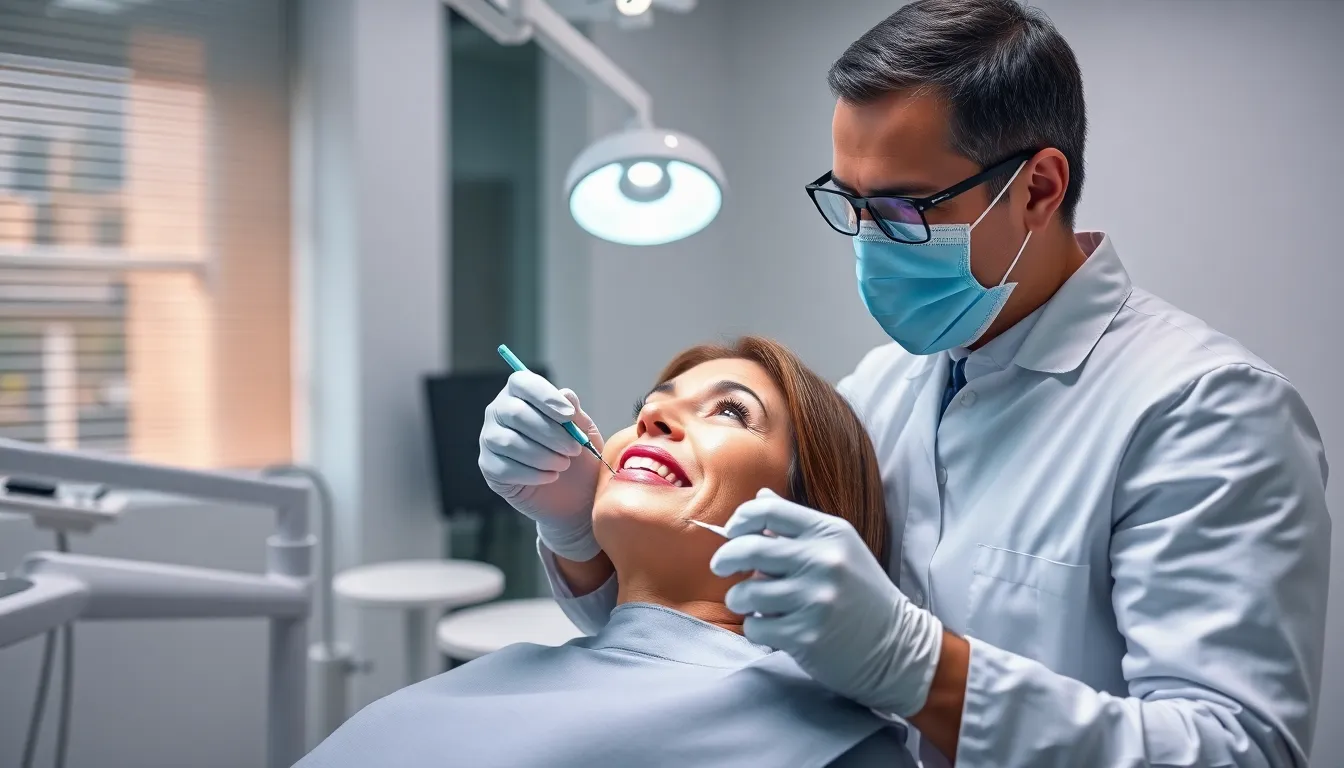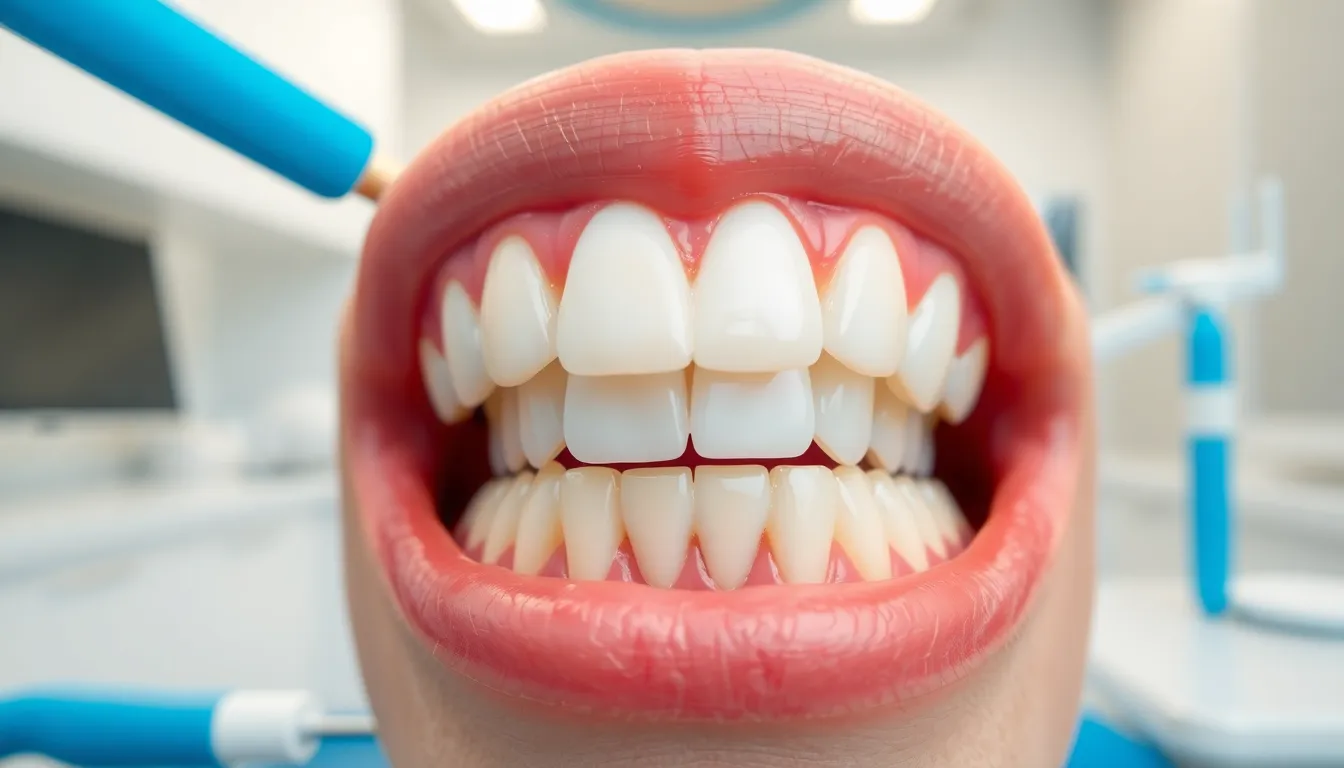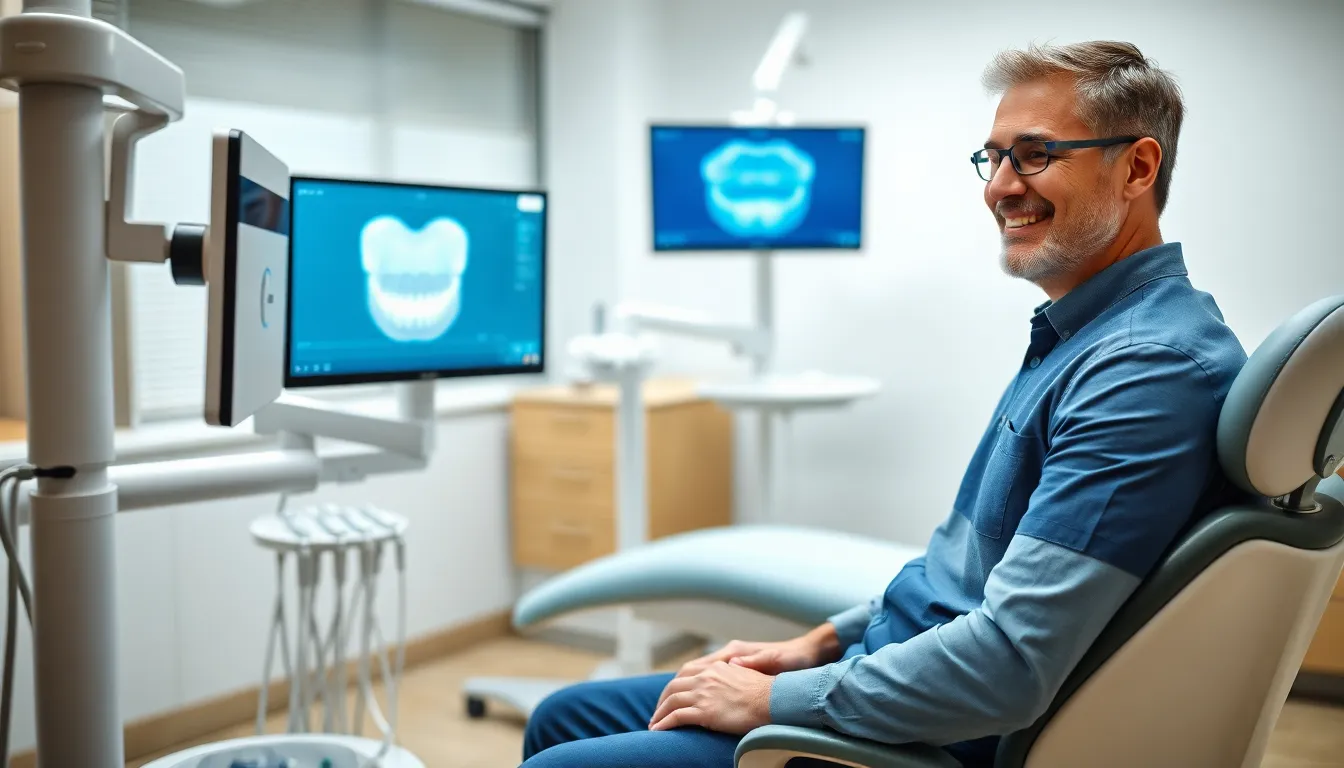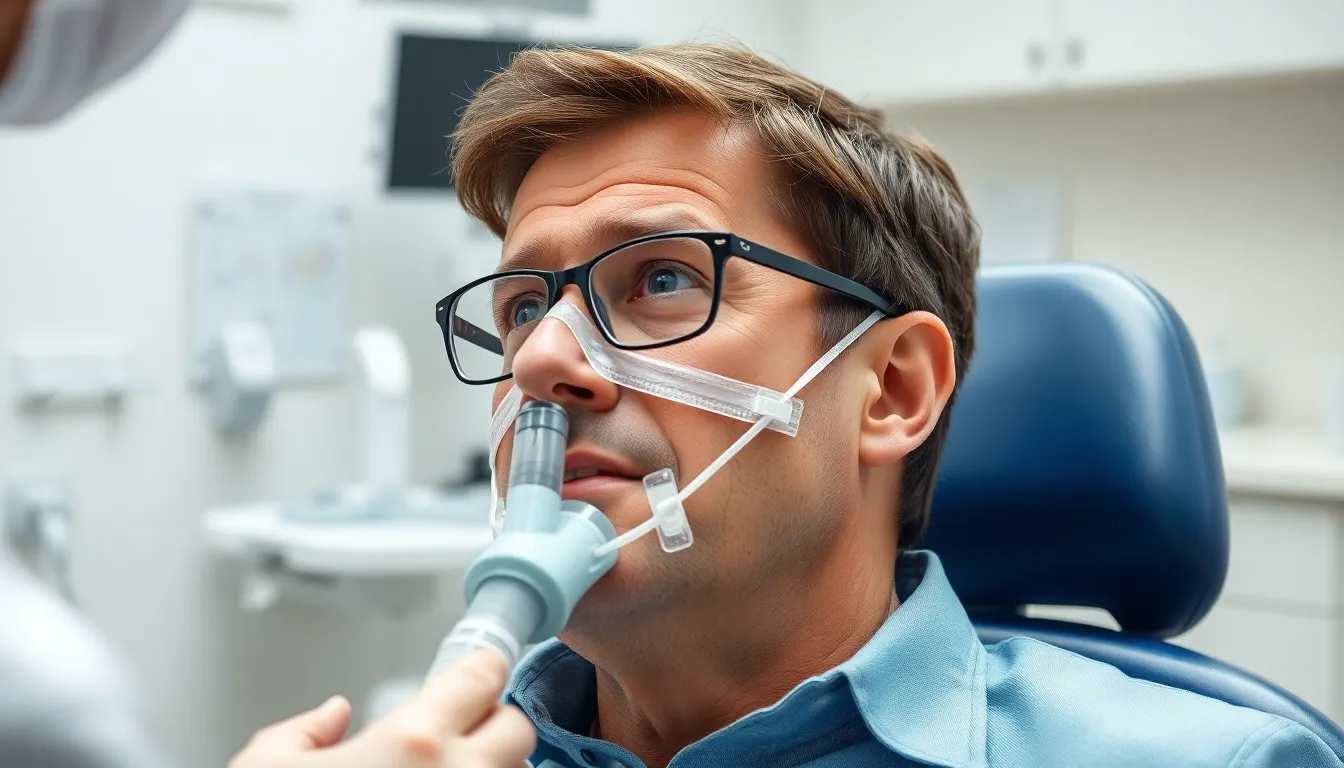Are you tired of struggling with sleep apnea and looking for EMA sleep appliance reviews? You’re not alone—millions search for effective alternatives to CPAP therapy that can deliver better sleep without the discomfort.
The Elastic Mandibular Advancement (EMA) oral appliance has become a popular option for those with mild to moderate sleep apnea. This custom-fitted device works by gently moving your lower jaw forward to keep your airway open during sleep. As you consider whether an EMA device might be right for you, understanding real users’ experiences, effectiveness ratings, and potential side effects can help you make an well-informed choice about this sleep apnea treatment option.
What Is an EMA Sleep Appliance?
The EMA (Elastic Mandibular Advancement) sleep appliance is a custom-fitted oral device designed to treat snoring and obstructive sleep apnea. Created by Frantz Design Inc., this appliance works by gently moving your lower jaw forward to maintain an open airway during sleep. Unlike bulky CPAP machines, the EMA is a small, comfortable mouthpiece that fits over your upper and lower teeth.
Dr. Todd B. Harris, a sleep dentist with over 15 years of experience, explains: “Many of my patients come to me frustrated with their CPAP therapy. The EMA offers them a less intrusive alternative that’s both effective and comfortable for overnight wear.”
The device consists of two custom-made trays connected by elastic straps that create gentle forward positioning of the jaw. These elastic bands come in different strengths (9 variations), allowing for precise customization based on your exact treatment needs. Your dentist can adjust the tension to find the perfect balance between comfort and effectiveness.
Susan T., a long-time sleep apnea sufferer, shared: “After struggling with my CPAP for years, switching to the EMA changed my sleep quality dramatically. It’s so much easier to travel with, and I don’t wake up with the dry mouth I experienced with the CPAP.”
The EMA appliance stands out from other oral devices due to its patented elastic strap design, which permits side-to-side movement and limited mouth opening while maintaining the forward jaw position. This flexibility makes it more comfortable than rigid alternatives, especially for people who tend to move their jaw during sleep.
How the EMA Sleep Appliance Works
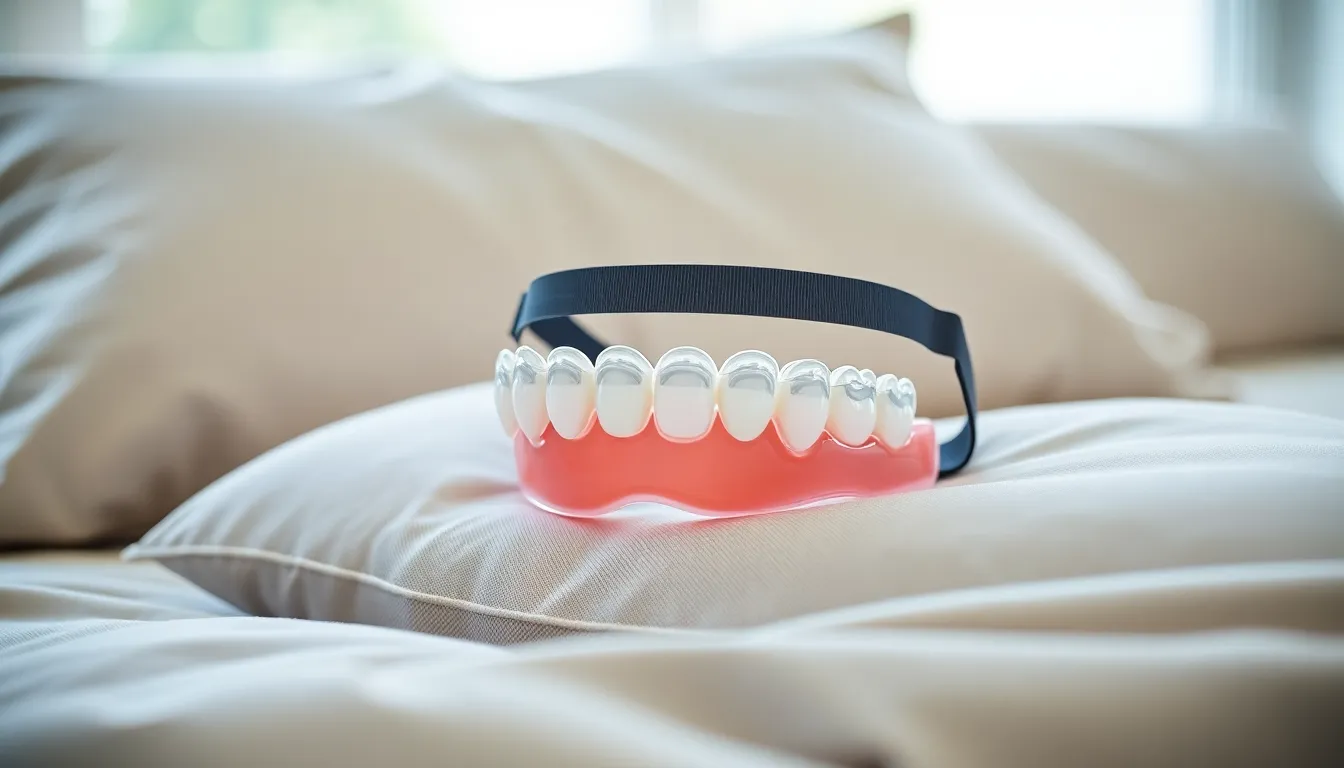
The EMA (Elastic Mandibular Advancement) Sleep Appliance operates through a simple yet effective mechanism that addresses the root cause of sleep apnea. It consists of custom-fitted upper and lower mouthguards connected by elastic straps that gently advance your lower jaw forward during sleep. This bilateral hinge design maintains an open airway while allowing natural jaw movement, preventing the soft tissues from collapsing and blocking airflow.
Key Components and Design
Custom-fitted dental trays form the foundation of the EMA appliance, creating a comfortable and secure fit over your upper and lower teeth. Elastic straps connect these trays and provide adjustable tension in 1mm increments, allowing your dentist to fine-tune the level of jaw advancement based on your exact needs. The bilateral hinge design distinguishes EMA from rigid alternatives, permitting natural movement without locking your jaw in a fixed position. Many patients appreciate the device’s compact size and unobtrusive design, making it easy to adapt to and travel with.
Dr. Harris notes, “The EMA’s design brilliance lies in its simplicity. The elastic straps allow for precise calibration of jaw positioning while giving patients the freedom of movement they need for comfort. This balance of effectiveness and wearability is why so many of my patients prefer it over other options.”
Benefits for Sleep Apnea and Snoring
EMA devices significantly reduce the Apnea-Hypopnea Index (AHI), decreasing the frequency and severity of breathing interruptions while improving oxygen saturation levels. Users typically experience reduced snoring, less daytime fatigue, enhanced cognitive function, and better overall sleep quality. The EMA boasts higher compliance rates compared to CPAP machines due to its comfortable fit, silent operation, and ease of use. Its adjustability allows for ongoing optimization as treatment progresses, ensuring continued effectiveness. The portable design makes it convenient for travel without compromising your sleep therapy.
Top-Rated EMA Sleep Appliances in 2023

The EMA Sleep Appliance continues to evolve with several innovative models designed to address different patient needs. These top-rated options leverage advanced technologies and materials to enhance both effectiveness and comfort for sleep apnea sufferers.
Most Comfortable Models
EMA devices stand out in the sleep appliance market for their exceptional comfort features. The elastic straps connecting the upper and lower trays avoid rigid jaw positioning, significantly reducing common side effects like jaw pain and discomfort that plague many other oral appliances. These interchangeable elastic bands come in various lengths and strengths, allowing for personalized fit adjustments in 1mm increments to address individual needs for bite opening and mandibular advancement.
The EMA Custom model exemplifies this commitment to comfort with its precisely customized fit that conforms perfectly to your dental anatomy. Its thin occlusal pads maintain a minimal profile that maximizes oral cavity volume, improving airflow during sleep while minimizing the feeling of bulkiness that many patients dislike in other devices.
Dr. Harris notes, “Many of my patients who couldn’t tolerate CPAP find the EMA’s flexible design to be a game-changer. The ability to make subtle adjustments without locking the jaw in one position allows for natural movement during sleep, which dramatically improves compliance.”
The EMA Serena Nylon represents another comfort advancement, utilizing durable nylon material that feels less intrusive in the mouth while maintaining structural integrity over time. Patients particularly appreciate how this model balances firmness with flexibility for a secure yet gentle fit.
Best Value Options
The EMA Now offers an excellent entry point for those seeking an effective solution without unnecessary frills. This model focuses on simplicity and efficiency while maintaining the core benefits of mandibular advancement therapy at a more accessible price point than some competitors.
For those seeking cutting-edge technology with excellent value, the EMA 3D incorporates advanced 3D printing techniques that enable precise customization and faster production. This manufacturing approach has created partnerships allowing for same-day production in many cases, eliminating lengthy wait times typical with traditional dental appliances.
“I switched from a generic over-the-counter snoring device to the EMA 3D last year,” shares Michael T., a patient of Dr. Harris. “The difference in quality and comfort is remarkable, and considering I’m sleeping better and feeling more energized every day, it’s been worth every penny.”
The EMALign and EMA Milled models provide outstanding durability through advanced milling processes, potentially offering better long-term value even though a slightly higher initial investment. These options prove especially beneficial for patients who tend to grind their teeth during sleep, as they resist wear more effectively than conventional appliances.
When comparing cost-effectiveness across sleep apnea treatments, EMA appliances generally present a relatively economical option compared to other custom mandibular advancement devices, particularly when considering the important quality-of-life improvements they deliver through better sleep quality and reduced apnea symptoms.
Real User Experiences with EMA Sleep Appliances
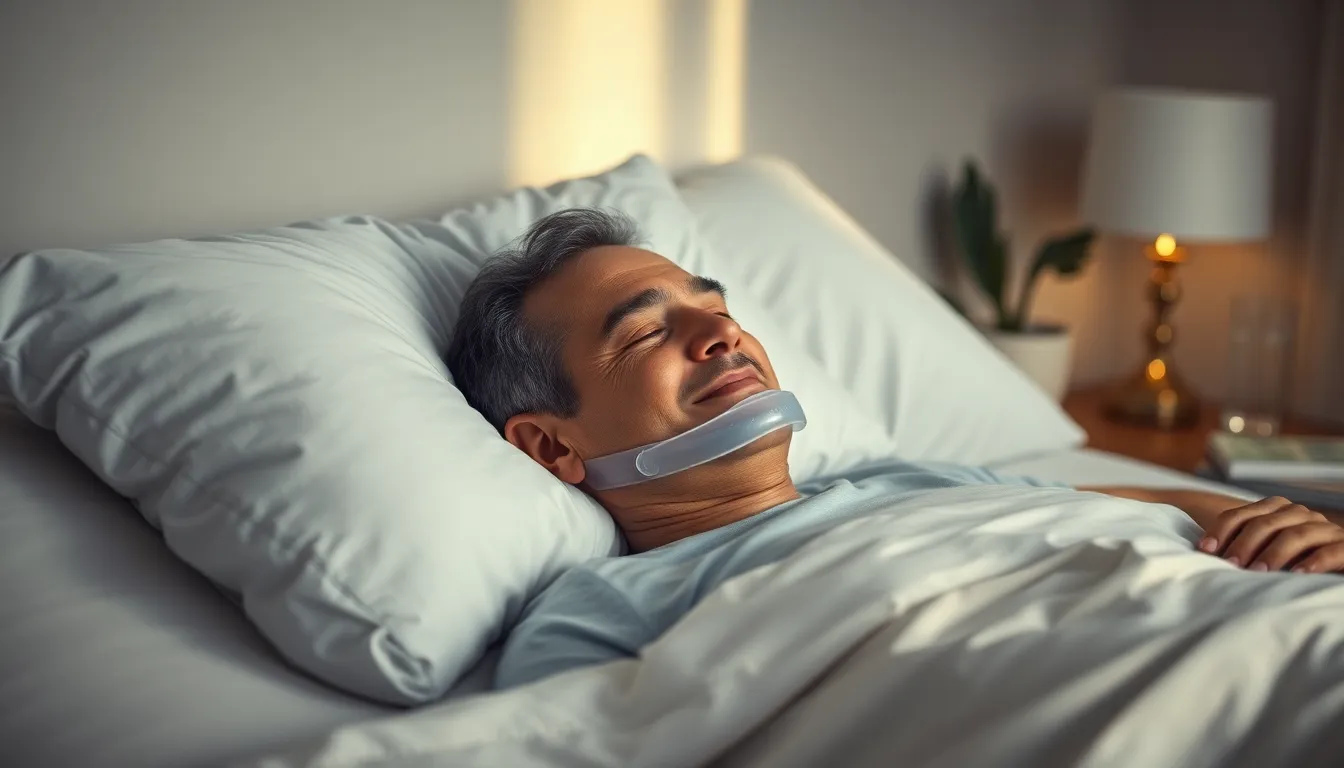
Patient experiences with the EMA sleep appliance reveal consistent patterns of satisfaction and effectiveness. Users commonly report successful long-term use with minimal side effects, appreciating the device’s custom fit and adjustable design that allows for comfortable mandibular mobility during sleep.
Success Stories
Clinical studies confirm that EMA devices significantly reduce the Apnea-Hypopnea Index (AHI) and improve oxygen saturation levels during sleep. Many users experience dramatic quality-of-life improvements, including reduced snoring, decreased daytime sleepiness, enhanced concentration, and better overall sleep quality. The adjustability of the EMA allows dentists to fine-tune the device for maximum effectiveness while maintaining comfort throughout treatment.
“The EMA has completely transformed my sleep quality,” shares Michael R., a patient of Dr. Harris. “After struggling with CPAP for months, switching to the EMA felt like finding freedom. I can actually sleep through the night now, and my wife no longer has to wear earplugs.”
EMA appliances demonstrate higher patient compliance rates compared to CPAP therapy due to their comfortable design and ease of use. Users frequently describe the EMA as a reliable solution for managing mild to moderate sleep apnea and snoring without the bulkiness of traditional CPAP machines.
Common Complaints
Even though high satisfaction rates, some EMA users note the need for periodic elastic strap replacement, which represents an ongoing maintenance requirement. Occasional repairs become necessary if the anchors break off, creating inconvenience for some patients who must visit their provider for adjustments.
Minor jaw discomfort or temporary toothache affects some users initially, though these issues typically resolve with proper adjustments or simply time for adaptation. Dr. Harris explains, “About 15% of my patients experience mild morning jaw soreness during the first two weeks, but this almost always resolves as they adjust to the device.”
Some long-term users consider upgrading to alternative devices like the TAP III Elite after extended EMA use, primarily due to maintenance considerations or seeking different accommodations for tongue space. But, compared to other treatment options, EMA-related complaints remain relatively infrequent, with most users reporting minimal side effects and sustained satisfaction with their sleep improvement.
EMA vs. Other Sleep Apnea Treatments
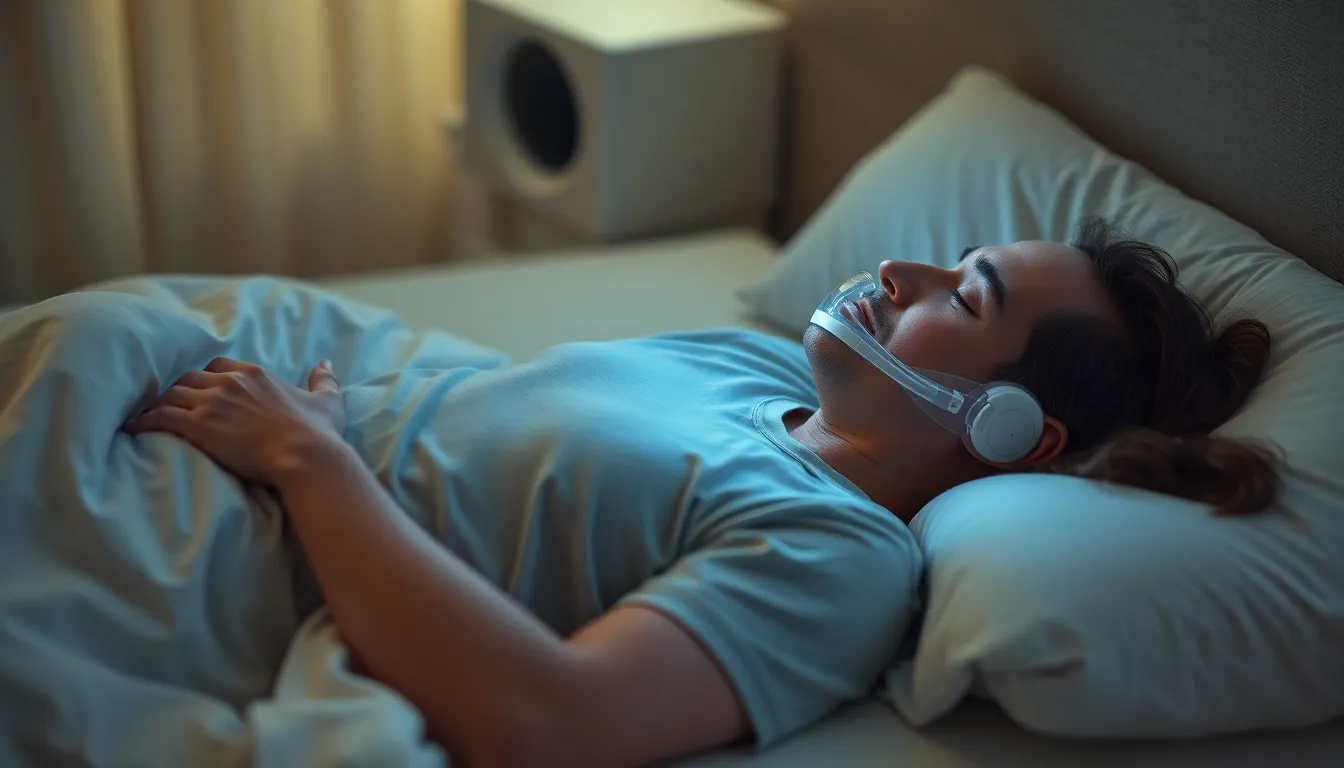
EMA sleep appliances offer unique advantages compared to other sleep apnea treatment options. Their customizable design and comfortable fit make them an attractive alternative for many patients struggling with conventional therapies.
Comparing EMA to CPAP Therapy
CPAP therapy remains the gold standard for severe sleep apnea cases, providing continuous airway pressure throughout the night. EMA devices, but, excel at treating mild to moderate obstructive sleep apnea with higher compliance rates due to their comfort and convenience. Many patients abandon CPAP machines because of mask discomfort, noise issues, and the inconvenience of traveling with the equipment.
“After struggling with my CPAP for over a year, I was at my wit’s end,” shares Michael R., a patient of Dr. Harris. “The EMA changed everything for me. I can actually sleep through the night without feeling claustrophobic or waking up to readjust a mask.”
EMA devices offer practical advantages in everyday use. They’re completely portable, silent during operation, and don’t require electricity, making them ideal for travelers and campers. Your breathing remains natural with an EMA, unlike the forced air sensation many CPAP users find uncomfortable.
EMA vs. Other Oral Appliances
The EMA’s unique elastic strap mechanism sets it apart from rigid mandibular advancement devices on the market. These elastic connectors allow controlled, gentle jaw advancement while permitting natural jaw movement during sleep, significantly reducing the temporomandibular joint discomfort common with other oral appliances.
“The flexibility of the EMA system is what makes it so effective for my patients,” Dr. Harris explains. “The nine different strap lengths combined with four tension options give us 36 possible configurations to find that perfect balance between effectiveness and comfort.”
Adjustability features make the EMA particularly versatile compared to competing devices. The interchangeable elastic straps enable precise mandibular advancement between 4 and 14 mm, offering more fine-tuning options than most other oral appliances available. This customization capacity ensures optimal airway opening while maximizing comfort during nightly use.
Patients transitioning from other oral appliances frequently report that the EMA’s flexible design causes less jaw fatigue and morning soreness. The device’s two-piece construction allows slight mouth opening and lateral movement, accommodating various sleeping positions without compromising effectiveness or comfort.
Who Should Consider an EMA Sleep Appliance?

The Elastic Mandibular Advancement (EMA) device offers a comfortable alternative for individuals struggling with sleep-disordered breathing. This custom-fitted oral appliance works by gently advancing your lower jaw forward to maintain an open airway during sleep, making it particularly suitable for exact patient profiles.
Ideal Candidates
You’re an excellent candidate for an EMA sleep appliance if you have mild to moderate obstructive sleep apnea (OSA) or problematic snoring caused by airway obstruction. People requiring mandibular advancement between 4 and 14 millimeters see optimal results with EMA devices. Many patients who find CPAP therapy claustrophobic or uncomfortable turn to EMA as a more user-friendly solution.
EMA devices work particularly well for individuals who:
- Need a portable, discreet sleep apnea treatment option
- Require the ability to breathe through their mouth while sleeping
- Want a custom-fitted appliance with adjustable tension options
- Travel frequently and need a convenient alternative to CPAP
- Experience difficulty tolerating the noise or pressure of CPAP therapy
Dr. Harris notes, “Many of my patients who struggled with CPAP compliance find immediate relief with the EMA system. Its customizable elastic straps allow for precise adjustments that maximize both comfort and effectiveness, leading to significantly higher usage rates compared to CPAP machines.”
When to Choose Alternative Treatments
EMA devices aren’t appropriate for everyone with sleep apnea. You should consider alternative treatments if you have severe OSA requiring more aggressive intervention. Patients needing mandibular advancement beyond the EMA’s adjustable range typically require different answers.
Alternative treatments might be necessary if you have:
- Complex airway obstruction patterns not addressed by jaw advancement alone
- Important dental issues like loose teeth or advanced periodontal disease
- Severe temporomandibular joint (TMJ) dysfunction that could worsen with oral appliances
- Physical limitations preventing proper fitting or use of an oral device
- Previously tried oral appliance therapy without success
Susan T., a long-time EMA user, shares: “After struggling with my CPAP for years, my sleep specialist suggested trying an EMA device. The difference was immediate—I could finally sleep comfortably without the mask and hoses. My energy levels improved within days, and my husband appreciates the quieter nights too!”
For severe OSA cases, CPAP remains the gold standard treatment option, with surgical interventions representing another pathway when conservative approaches prove ineffective. Your sleep specialist can determine the most appropriate treatment based on your exact sleep study results and anatomical considerations.
Caring for Your EMA Sleep Appliance
Proper maintenance of your EMA sleep appliance extends its lifespan and ensures optimal performance night after night. Regular cleaning prevents bacteria buildup that could lead to oral health issues or compromise the device’s effectiveness. Daily care takes just a few minutes but makes a important difference in both comfort and hygiene.
Daily Cleaning Routine
Your EMA appliance requires cleaning each morning after removal. Rinse it thoroughly with cool water to remove saliva and debris that accumulated overnight. Gently brush all surfaces using a soft toothbrush and mild soap or specialized appliance cleaner rather than toothpaste, which can be abrasive and damage the device. After cleaning, pat the appliance dry with a clean towel before storing it in its ventilated case.
Deep Cleaning Methods
Deep cleaning your EMA device once weekly maintains its pristine condition and prevents discoloration. Soak the appliance in a dental device cleaning solution for the manufacturer-recommended time, typically 15-20 minutes. Antibacterial soaking answers specifically designed for oral appliances work best, as household cleaners contain harsh chemicals that may degrade the materials. After soaking, rinse thoroughly with cool water and allow the device to air dry completely before storage.
Storage Recommendations
Proper storage protects your EMA appliance from damage when not in use. Keep your device in its ventilated case to prevent warping and contamination from airborne particles. Susan T., a long-term EMA user, shares, “I learned the hard way about proper storage after my dog found my unprotected appliance—now I always use the case and keep it on a high shelf.” Avoid exposure to heat sources like hot water, direct sunlight, or car dashboards, as excessive heat can warp the custom-fitted trays and compromise their effectiveness.
When to Replace Parts
The elastic straps on your EMA device require periodic replacement as they naturally lose tension over time. Most patients replace their straps every 4-6 months, though individual wear patterns vary based on usage. Dr. Harris notes, “Patients who grind their teeth at night might need more frequent strap replacements, while others find their straps maintain elasticity longer.” Signs that indicate replacement needs include visible wear, decreased tension, or if the appliance no longer effectively holds your jaw in the proper forward position during sleep.
Regular Dental Check-ups
Schedule routine follow-up appointments with your dental provider to ensure your EMA continues functioning optimally. These check-ups allow your provider to assess the condition of your appliance, make necessary adjustments to improve comfort or effectiveness, and evaluate your treatment progress. Dental professionals can spot potential issues before they become problems, helping maintain the therapeutic benefits of your sleep apnea treatment without interruption.
Conclusion
The EMA sleep appliance stands out as a compelling option for those struggling with mild to moderate sleep apnea who find CPAP therapy challenging. Its customizable design with elastic straps offers the perfect balance of comfort and effectiveness while maintaining an open airway during sleep.
With multiple models available in 2023 to suit different needs and budgets you’ll likely find an option that works for your exact situation. The high satisfaction rates and impressive clinical results speak volumes about this device’s performance.
Remember that proper care and regular maintenance will extend your appliance’s lifespan and effectiveness. While not suitable for everyone the EMA represents a life-changing solution for many sleep apnea sufferers seeking a more comfortable and portable alternative to traditional treatments.
Frequently Asked Questions
What is an EMA oral appliance?
The Elastic Mandibular Advancement (EMA) oral appliance is a dental device designed to treat sleep apnea and snoring. It consists of two custom-fitted mouthguards connected by elastic straps that gently move the lower jaw forward during sleep. This movement helps keep the airway open, preventing the collapse of soft tissues that cause breathing interruptions. Unlike bulky CPAP machines, the EMA is small, comfortable, and easy to travel with.
How does the EMA device work?
The EMA works by gently advancing the lower jaw forward during sleep. This simple mechanism addresses the root cause of sleep apnea by preventing the tongue and soft tissues from collapsing into the airway. The elastic straps connecting the upper and lower mouthguards allow for natural jaw movement while maintaining the forward position. This design keeps the airway open throughout the night, reducing breathing interruptions and improving oxygen flow.
Who is an ideal candidate for an EMA device?
Ideal candidates for EMA devices include people with mild to moderate obstructive sleep apnea, individuals who struggle with CPAP therapy due to discomfort or claustrophobia, and those with problematic snoring caused by airway obstruction. The device is particularly effective for patients who need an alternative to CPAP therapy. However, people with severe sleep apnea, certain dental conditions, or complex airway obstruction patterns may need different treatment options.
What benefits can I expect from using an EMA device?
Users typically experience reduced snoring, fewer breathing interruptions, improved oxygen levels, and better sleep quality. Many report less daytime fatigue, enhanced cognitive function, and increased energy. The EMA’s comfortable design leads to higher compliance rates compared to CPAP machines. Additionally, users appreciate its portability, silent operation, and the ability to breathe naturally while wearing it. Most patients adapt to the device quickly and notice improvements within the first few weeks.
How do I care for my EMA sleep appliance?
Care for your EMA device by rinsing it with cool water after each use and brushing it gently with a soft toothbrush (no toothpaste). Deep clean weekly by soaking in a dental appliance cleaner. Store in a ventilated case when not in use, keeping it away from heat sources. Replace the elastic straps every 4-6 months as they wear out. Schedule regular dental check-ups to ensure proper fit and function of your appliance.
How does the EMA compare to CPAP therapy?
While CPAP remains the gold standard for severe sleep apnea, the EMA offers distinct advantages for mild to moderate cases. The EMA is smaller, portable, silent, and allows for natural breathing without masks or hoses. Many patients find it more comfortable and less intrusive than CPAP, resulting in higher compliance rates. The EMA also eliminates issues like mask leaks, skin irritation, and the claustrophobic feeling some experience with CPAP therapy.
Are there different models of EMA devices available?
Yes, several EMA models are available to meet diverse patient needs. The EMA Custom offers precisely tailored fit, while the EMA Serena Nylon uses durable materials for less intrusion. Budget-conscious patients might choose the EMA Now, while the EMA 3D incorporates advanced 3D printing for quick customization. Other specialized options include the EMALign for alignment issues and the EMA Milled for durability, particularly beneficial for teeth grinders.
What potential side effects might occur with an EMA device?
Some users may experience temporary morning jaw soreness, slight tooth discomfort, or increased salivation when first using an EMA device. These side effects typically resolve as the mouth adjusts to the appliance. In rare cases, prolonged use might cause minor changes in bite alignment. However, most users report minimal side effects compared to other treatments, and regular follow-ups with a dental professional can address any concerns promptly.


